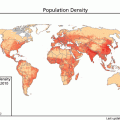Classification: ICD-9 087; ICD-10 A68.0 – A68.1
Syndromes and synonyms: Epidemic or louse-borne relapsing fever (LBRF), endemic or tick-borne relapsing fever (TBRF).
Agent: For LBRF, Borrelia recurrentis, a Gram-negative spirochete. For TBRF, at least 15 Borrelia species, each specific to a particular species of tick vector. Since the 1980s, the number of new Borrelia species associated with relapsing fever has increased, in part due to improved diagnostics.
Reservoir: For LBRF, humans; for TBRF, wild rodents, bats and ticks (by trans-stadial and transovarian transmission). B. duttonii has thus far not been detected in wild animals, only in humans and tick vector O. moubata. Livestock may also become infected.
Vector: TBRF is primarily transmitted by Ornithodoros ticks. LBRF is transmitted by the human body louse (Pediculus humanus); neither the head louse nor the pubic louse has been shown to transmit the disease.
Transmission: LBRF is not transmitted by the bite itself but by feces or louse gut fluid entering broken skin by scratching. TBRF: by bite or coxal fluid of infected ticks. Transmission may also occur through blood transfusion or transplacental.
Stay updated, free articles. Join our Telegram channel

Full access? Get Clinical Tree




